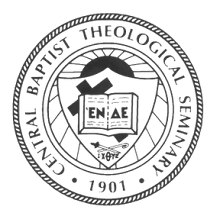I returned to Kansas City on Saturday after my lengthy
sojourn in Myanmar. While it is wonderful to be home, I feel that I leave a
little more of my heart there with each pilgrimage. Many students and faculty of Myanmar
Institute of Theology would like the freedom to come and go that Americans
enjoy. Every time one from Myanmar leaves the country, he or she must have a
letter of invitation from a school or church or other contact here.
It was a
bit of a jolt to leave 102 degree weather and return to snow in late
March. After nearly three weeks in
sandals and light clothing, bundling up is hard to do!
As a part
of the doctoral seminar on Incarnational Theology, we viewed “The Gospel of
John,” a film that uses only the words of the Fourth Gospel. It is visually stunning and helpful to hear
the whole narrative in two hours. The
healing of the man born blind in chapter 9 is a richly textured scene, with
Jesus mixing saliva and dirt to put on his eyes. Stumbling with his walking stick, he makes
his way to the pool of Siloam to wash his eyes, as Jesus had instructed.
Once he can
see, his life gets more complicated as incredulous neighbors bring him to the
Pharisees. He becomes another flash
point in the building conflict between the signs Jesus is performing and the
religious authorities that want to silence his claims. The one with opened eyes
sees clearly, while those who claim to see are displaying spiritual blindness.
As he was interrogated
about the miraculous healing, the man born blind declares:
Well, this is news! You don’t know where he comes from, yet he
opened my eyes! We know that God doesn’t hear sinners, but that if people are
devout and obey God’s will, God listens to them. It is unheard of that anyone ever gave sight
to a person blind from birth. If this
one were not from God, he could never have done such a thing! (John 9:30-33)
For this testimony, he was put out of the synagogue. When Jesus heard of this expulsion, he found
the healed man and asked, “Do you believe in the Chosen One?” The man answered,
“Who is this One, that I may believe?”
“You are
looking at him,” Jesus replied. The
healed one said, “Yes, I believe,” and worshipped Jesus.”
The story
ends with Jesus saying, “I came into this world to execute justice—to make the
sightless see and the seeing blind” (v. 39).
Believing allows one to see God’s work; disbelief blinds one to the One
God has sent to transform the world.
As we
examine this text on the Fourth Sunday in Lent, I pray for new sight that I
might recognize God’s ongoing work in our midst. I want to see more clearly.
Molly T.
Marshall
Central
prepares women and men for seeking God, shaping church, and serving humanity.
* Jesus cures the man born blind - JESUS MAFA. Jesus cures the man born blind, from Art in the Christian Tradition, a project of the Vanderbilt Divinity Library, Nashville, TN. http://diglib.library.vanderbilt.edu/act-imagelink.pl?RC=48383 [retrieved March 24, 2014].



No comments:
Post a Comment